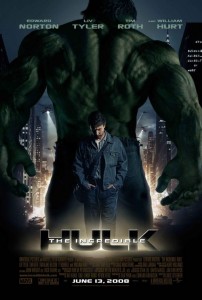Based on ex-cartoonist Robert Graysmith’s book detailing his experiences in tracking the Zodiac killer, the film follows police inspectors David Toschi (Mark Ruffalo) and William Armstrong (Anthony Edwards), reporter Paul Avery (Robert Downey Jr.), and Graysmith himself (Jake Gyllenhaal) as they all try to find the murderer. As the Zodiac taunts them with letters and codes, the stress of the case takes its toll on each man.


Patrick Roberts, a filmmaker attending the same pre-screening as I, said it best: “Seeing Zodiac is like watching a book.” That book, by the way, isn’t a narrative; it’s a bound spreadsheet of facts. It’s hard to find a film that dumps more information on the viewer. Much of it goes nowhere, and no conclusion is reached, but then, that’s not the point. This isn’t a detective story about catching a murderer or a thriller about avoiding becoming his next victim (although the advertisements would have you believe otherwise). It is a movie about the strain felt by the investigators of the first mass-media serial killer.
If you aren’t aware of the case, a man calling himself The Zodiac killed somewhere between six and twenty people over several decades starting in 1969. He sent notes to newspapers and the police, promising greater crimes (that he didn’t commit) and confessing not only to his own deeds but to those of others. He also sent ciphers. He was never caught. There was a suspect, based on circumstantial evidence, who died of a heart attack, but thinking it was him comes from our natural tendency to want to tie up our stories. This is a tale that never ended, but faded away. No one knows the killer’s motivation and his victims seemed to have been chosen at random. In 2002, the case was made “inactive” by the SFPD.
So, here we have a two and a half hour movie, covering years, in which very little happens, no main character is ever in real danger, and in the end, it all comes to nothing. That doesn’t sound promising, but this is the best movie of its type you’re likely to find (if there are others). It is strangely compelling. It should be boring, but it isn’t. At times, when a character would once again go through a pile of papers, searching for some clue that would break the case open, I felt like I was doing my taxes, but that my taxes were of great importance and needed, desperately, to be filed now. We’re talking about a pretty absorbing tax return.
Ruffalo and Edwards are believable as stoic policeman. While the focus is the inspectors’ work, they are rounded characters. We don’t see their lives outside of police duties, but there is never any doubt that such lives exist. For the middle hour, the film is a procedural and Ruffalo carries it. His inspector Toschi isn’t a superman or particularly exciting. He’s an average-Joe homicide detective, doing a tough job, day-in and day-out, and we’re carried along.
While the movie avoids flash or magic, Downey Jr. manages to sneak some in. He is fantastic as slightly elitist reporter Paul Avery, but then it is the best part. He’s the only one who gets any jokes. I’d love to see a string of ’40s-era detective comedies with Downey playing a similar character.
The one failure is Graysmith, who isn’t convincing as a human, which is odd since the real Graysmith wrote the book the movie is taken from. Partly, it is Gyllenhaal’s sleepy performance, but the problem is with the role. He’s a one-dimensional obsessed nerd, but we’re never let in on his obsession. Why does he feel compelled to solve the case? Apparently the real man was outraged by the crimes, but we don’t see that, nor any reason why he would take it personally. For a character study, we’re given surprisingly little insight into this man. We aren’t even given closure for his emotional journey, or for that period of his life. But that’s the case with most of the characters. Some text pops up on screen at the end, letting us know what happened to them. That’s not exactly satisfying.
For over two hours this oddly distancing flick kept me and the audience glued to the screen, but the hold began weakening toward the end. Maybe it’s just too long. Throughout the movie, titles pop up to state that 3 months or 1 year or 3 years have passed. When the final one, tossing us over seven years appeared, there were audible sighs, groans, and giggles around me. Everyone was beginning to understand that we’d been listening to a very long shaggy dog story.










